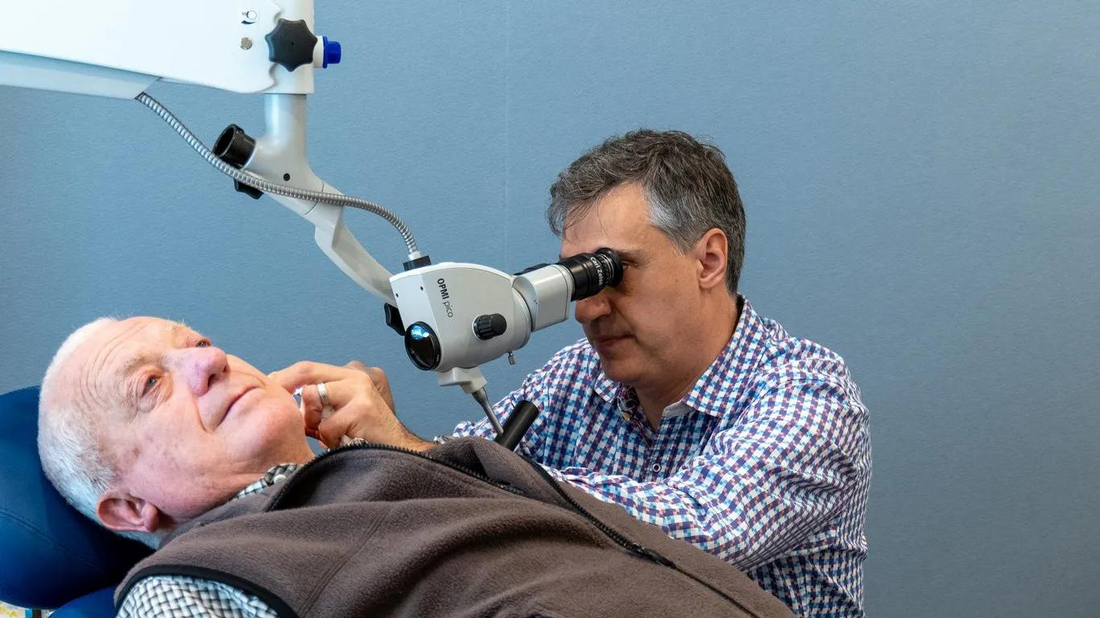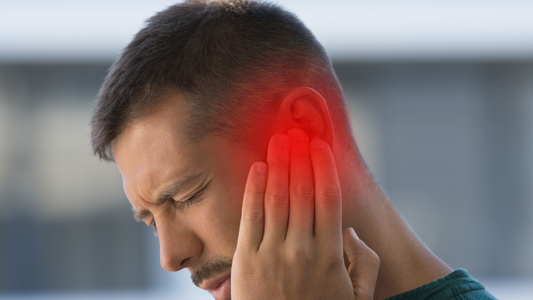Hey there! Tired of dealing with that stubborn earwax? It's more than just nuisance - it plays a role in ear health. Our ears produce this wax naturally. You might question its purpose or if it's linked to that occasional ringing in your ears. I'm here to shed light on that for you.
You may have heard about folks struggling with a persistent ringing in their ears. This annoyance is called tinnitus. A variety of factors can trigger it, and sometimes, it’s simply an excess of earwax. No need to stress though. Stick with me, and we'll explore how you can both prevent and tackle it. Eager to get your ears feeling good again? Let’s get to it.
Understanding Earwax and Its Functions

That sticky stuff in your ears has a name: earwax, or if you prefer, "cerumen." Made in the ear canals, this substance serves several beneficial roles. It traps dust and dirt, preventing them from getting deeper into your ear. It also acts as a cleaning agent, escorting dead skin cells and debris out with everyday jaw movements. Without you noticing, old earwax escapes your ears, thanks to actions like chewing or talking.
Here's a point of interest: earwax varies between individuals, with some having a wet and sticky type and others a dry and crumbly version. Regardless of its form or appearance, it's working for you, not against you. Despite whatever first impressions it might give, earwax is doing the important work of maintaining ear cleanliness.
But earwax doesn't just clean. It acts as a barrier against bacteria and helps prevent overly dry ears. Surprisingly, it even has a sour taste due to its slight acidity, which is an effective deterrent against bugs and bacteria that shouldn't be in your ears.
The Role of Earwax in Ear Health
Some people might be concerned when they notice wax in their ears, but it's really just a sign that your body's defense system is on the job. Earwax is busy keeping your ears in tip-top shape. So when earwax crosses your mind, don't stress; understand it's simply your body's way of protecting your ears.
Treatment of Tinnitus caused by Excessive Earwax
Hearing a constant ringing in your ears can be enough to ruin your day. If the ringing—known as tinnitus—is due to too much earwax, you'll want to address it without delay. Overlooking tinnitus can mess with your focus and sleep, and who needs that hassle?
Imagine your earwax is like a determined little critter that's gotten too comfortable. You're not looking to give it a permanent home. Too much of it can soften sounds and trigger that nagging ringing. Keep those cotton swabs out of there, okay? They can do more harm than good and aren’t meant for deep cleaning your ears.
Seeking Professional Help for Earwax Removal
The wisest move is to get a hand from someone who knows ears inside and out. Your family doctor or an ear specialist can handle this. They're equipped with the right tools and know exactly how to get that wax out without a fuss.
The pros might use softening drops to make the wax more pliable, or they might opt for a micro-vacuum to extract it. Yes, a mini-vacuum for ears—nifty, right? It's a safe and targeted method to clear the blockage. Before you know it, that pesky ringing fades, and you're back to feeling like yourself.
Preventing future buildup? A simple wipe around the outer ear with a moist towel post-shower can do the trick. And keep your ears dry—waterlogging them is a no-go. Take care of your ears with these simple gestures, and they'll look after your hearing in return. Cheers to clear ears ahead!
Treatment of Tinnitus caused by Excessive Earwax
Struggling with that ringing in your ears? If tinnitus is rearing its head because of too much earwax, time to take action. Letting it slide could disturb your focus and sleep, proving to be a real nuisance.
Think of excessive earwax as an overstaying guest. It's not something you want sticking around. An abundance of it can dampen sounds, leading to that bothersome ringing. But here's a tip: steer clear of cotton swabs for digging in your ears – they might push the wax further in instead of cleaning it out.
Seeking Professional Help for Earwax Removal
If you're dealing with wax buildup, it's smart to turn to a pro – your family doctor or an ear specialist. They've got the right tools for the job and can safely remove that wax, hassle-free.
They might use drops to ease the wax out or even a tiny vacuum for thorough removal. That's right, a vacuum for your ears. It’s a safe approach to get you back to normal — minus the ringing. Before you know it, your ears are clear, and that constant noise is a thing of the past.
To prevent wax from building up again, a quick wipe around the outer ear post-shower goes a long way. Also, make sure your ears stay dry – water and ears don’t mix well. A little ear care daily can save you a lot of trouble later. Here’s looking forward to clear and comfortable ears!
Say Goodbye to Tinnitus and Hello to Healthy Ears
We've covered some ground on ear health today. Earwax isn't just gunk; it's a built-in shield for your ears. When you notice ringing, it might be a sign to back off and let your ears do their thing. No need for cotton swabs deep inside—the outside will do just fine. Trouble with hearing or non-stop ringing means it might be time to consult a professional.
Noise in your head can be a real hassle, but don't worry, there's help. For instance, our friends at the HearWell Group have hearing aids if you need them. For now, use these tips, look after your ears, and bid farewell to that annoying ringing. Thanks for reading—here's to enjoying the sounds of life without any interference!
Sources & References
- Schwartz, S. R., Magit, A. E., Rosenfeld, R. M., Ballachanda, B. B., Hackell, J. M., Krouse, H. J., Lawlor, C. M., Lin, K., Parham, K., Stutz, D. R., Walsh, S., Woodson, E. A., Yanagisawa, K., & Cunningham, E. R. (2017). Clinical Practice Guideline (Update): Earwax (Cerumen Impaction). Otolaryngology–Head and Neck Surgery, 156(1_suppl), S1-S29. https://doi.org/10.1177/0194599816671491
- Guest, J. F., Greener, M. J., Robinson, A. C., & Smith, A. F. (2004). Impacted cerumen: composition, production, epidemiology and management. QJM: An International Journal of Medicine, 97(8), 477-488. https://doi.org/10.1093/qjmed/hch082
- Burton, M. J., & Doree, C. (2009). Ear drops for the removal of ear wax. Cochrane Database of Systematic Reviews, 2009(1), CD004326. https://doi.org/10.1002/14651858.CD004326.pub2
- Michaudet, C., & Malaty, J. (2018). Cerumen Impaction: Diagnosis and Management. American Family Physician, 98(8), 525-529. https://www.aafp.org/pubs/afp/issues/2018/1015/p525.html
- Wright, T. (2015). Ear wax. BMJ, 351, h3601. https://doi.org/10.1136/bmj.h3601

The Hear Well Group Research Team: Trusted Hearing Health Insights
Our experienced research team compiles hearing health data from credible, peer-reviewed sources and presents it in easy-to-understand terminology. We ensure accuracy and trustworthiness, providing up-to-date, evidence-based recommendations to enhance hearing care practices and inform our readers' hearing well-being decisions.


